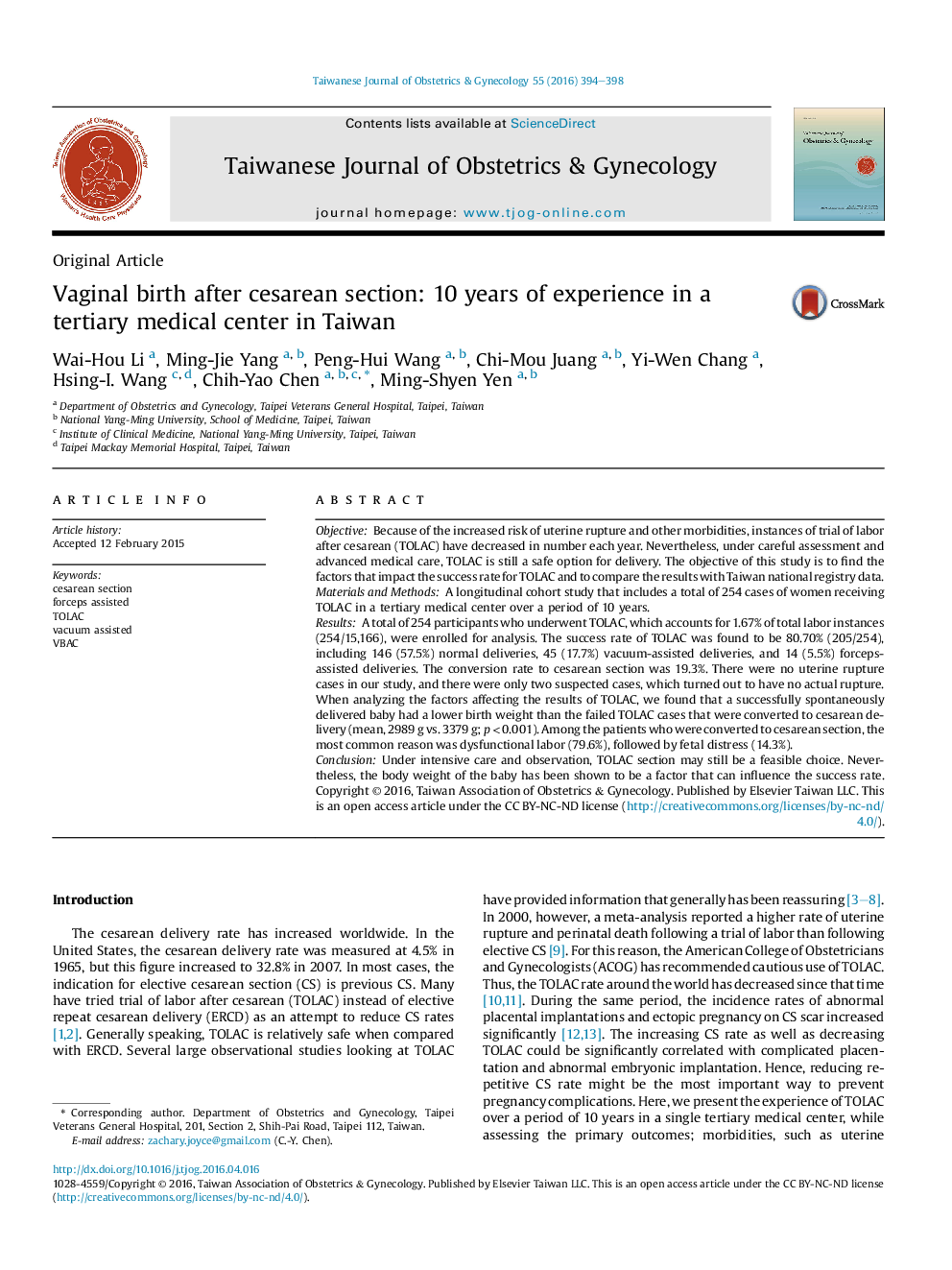| Article ID | Journal | Published Year | Pages | File Type |
|---|---|---|---|---|
| 3975167 | Taiwanese Journal of Obstetrics and Gynecology | 2016 | 5 Pages |
ObjectiveBecause of the increased risk of uterine rupture and other morbidities, instances of trial of labor after cesarean (TOLAC) have decreased in number each year. Nevertheless, under careful assessment and advanced medical care, TOLAC is still a safe option for delivery. The objective of this study is to find the factors that impact the success rate for TOLAC and to compare the results with Taiwan national registry data.Materials and MethodsA longitudinal cohort study that includes a total of 254 cases of women receiving TOLAC in a tertiary medical center over a period of 10 years.ResultsA total of 254 participants who underwent TOLAC, which accounts for 1.67% of total labor instances (254/15,166), were enrolled for analysis. The success rate of TOLAC was found to be 80.70% (205/254), including 146 (57.5%) normal deliveries, 45 (17.7%) vacuum-assisted deliveries, and 14 (5.5%) forceps-assisted deliveries. The conversion rate to cesarean section was 19.3%. There were no uterine rupture cases in our study, and there were only two suspected cases, which turned out to have no actual rupture. When analyzing the factors affecting the results of TOLAC, we found that a successfully spontaneously delivered baby had a lower birth weight than the failed TOLAC cases that were converted to cesarean delivery (mean, 2989 g vs. 3379 g; p < 0.001). Among the patients who were converted to cesarean section, the most common reason was dysfunctional labor (79.6%), followed by fetal distress (14.3%).ConclusionUnder intensive care and observation, TOLAC section may still be a feasible choice. Nevertheless, the body weight of the baby has been shown to be a factor that can influence the success rate.
